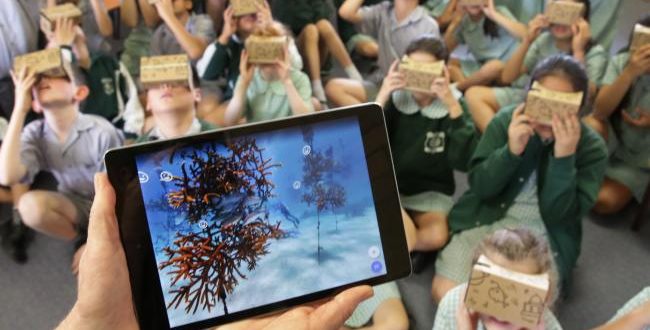Teachers could soon transform a classroom into a world-class virtual art exhibition with priceless masters adorning every wall, under an ambitious plan announced by Google.
And they’ll be able to place a virtual 3D model of the Colosseum or Michelangelo’s David on every desk, so that students can walk around it and study it from every angle, all at the same time.
The new augmented reality experiences were unveiled yesterday by Google at its annual developers’ conference at its Mountain View headquarters. They come courtesy of a new version of Google’s Expeditions app.
The tech giant also announced progress with its virtual reality offerings, but Clay Bavor, who heads Google’s ambitious VR/AR unit, admitted the technology was still in its infancy. “We’re a long way off from reaching the iPhone moment in VR, we’re in very early days,” he told journalists.
Virtual reality places people wearing special headsets in immersive, imaginary worlds, whereas augmented reality superimposes imaginary objects in the real world, as in the game Pokemon Go.
Google said it had worked with the Singapore Arts Science Museum to create a virtual rainforest in an otherwise empty 10,000 square foot vacant space. Visitors can walk around the virtual forest and view it by looking through their phone cameras. They can plant virtual trees and, as time passes, visitors can return to see those virtual plants grow.
Google offers augmented reality through its “Tango” AR project. Only one phone offers it so far, the Lenovo Phab 2 Pro. Another, the ASUS Zenphone AR, would be available mid year, it said.
An app called GAP lets users select a virtual mannequin, dress it in various clothing on sale, and then walk around it in the real world to view the outfit from all angles. There are already 150 apps built for Tango.
Google said users soon could point a Tango phone at their furniture and detailed measurements would appear on the display.
Augmented reality also will soon debut on Google Chrome browser. Users will select, say, a coffee table in an online store from a catalogue, and using AR, virtually place it in their lounge room to see if it fits and matches their decor. They can then buy it if they wish.
Google’s virtual reality experience is supplied through its Daydream View VR headset announced last year. You need to place your Android phone in the back of the headset for it to work.
Bavor said that by year’s end, eight phones would support Daydream View VR. They include LG’s next flagship phone and Samsung’s Galaxy S8 and S8+ smartphones.
Soon Daydream users will be able to share their VR experience with family members by beaming it to a Google Chromecast dongle attached to their TV.
Google has announced it is working with Lenovo and HTC to develop a stand-alone, high resolution, wireless VR headset, to come to market by year’s end. Wide angle cameras and motion sensors on the device will track a wearer as they move. This should bring a high quality VR experience to a wider audience with little installation required.
YouTube users meanwhile will soon be able to watch videos together in virtual reality while wearing headsets using a shared experience announced yesterday. They’ll be represented in VR as icons and can communicate with one another in a shared virtual space.
Start-ups such as AltSpace VR and Facebook through Facebook Spaces already have built basic shared experiences and it seems Google is heading in that direction.
Google started the trend towards VR with Google Cardboard.
YouTube already offers 360-degree videos. Users can watch a rock concert and view the stage and look around the auditorium. “YouTube has a community around its content and we want to bring that to VR,” it said.
Chris Griffith attended the Google I/O conference in California courtesy of Google.
Reader comments on this site are moderated before publication to promote lively and civil debate. We encourage your comments but submitting one does not guarantee publication. We publish hundreds of comments daily, and if a comment is rejected it is likely because it does not meet with our comment guidelines, which you can read here. No correspondence will be entered into if a comment is declined.





